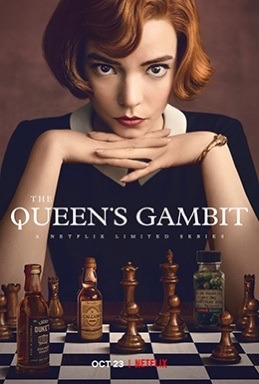by Chris Horner
 Two series have been streaming recently, to considerable success – The Queen’s Gambit (a Netflix miniseries, now concluded) and Succession (HBO, two series so far and more planned). They are interesting for a number of reasons – both for what they show, and perhaps more for what they do not, possibly cannot, show. So let’s consider some of the things we see and don’t see. I’m not going to recount the plot of either of them, as you can get that from Wikipedia and plenty of other places. But: spoiler alert: some will be divulged. Let’s look first at The Queen’s Gambit.
Two series have been streaming recently, to considerable success – The Queen’s Gambit (a Netflix miniseries, now concluded) and Succession (HBO, two series so far and more planned). They are interesting for a number of reasons – both for what they show, and perhaps more for what they do not, possibly cannot, show. So let’s consider some of the things we see and don’t see. I’m not going to recount the plot of either of them, as you can get that from Wikipedia and plenty of other places. But: spoiler alert: some will be divulged. Let’s look first at The Queen’s Gambit.
The Queens Gambit‘s success has been enormous. The acting and ‘look’ of the lead -Anya Joy-Taylor – is clearly an important part of it. She even looks on occasion like some elegant chess piece come to life in a Lewis Carroll kind of way. The production values and the way the plot steers away from some (not all!) expected outcomes is also relevant. The theme of success via struggle, including those against ‘inner demons’ isn’t new, but this film (based on a 1980s novel) handles them in an interesting way. But what is this series about? Here are a few suggestions about the world of TQG and what it seems to be saying.
I. TQG is a meticulously crafted fantasy, with many fairytale elements. It has many of the features of a quest/trial story, modified via contemporary psychological and social themes. It even has a ‘helper’ (Jolene) who steps in to give the hero the means she needs to overcome her last trial. It is also a bildungsroman – about how one becomes an adult, or successful self. The themes of mental illness, addiction and abandonment could not be more timely. Read more »
